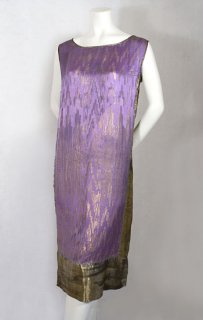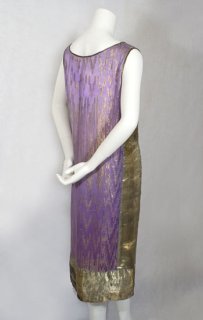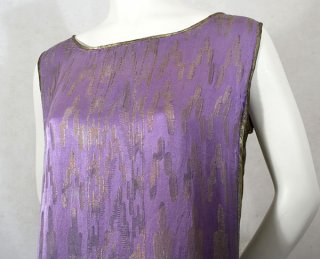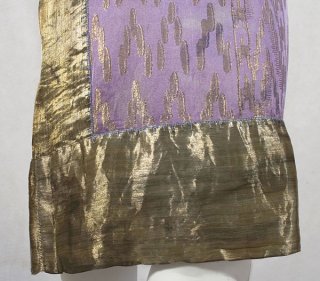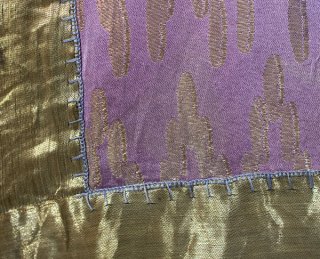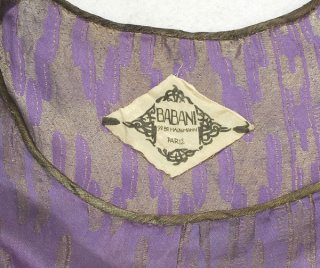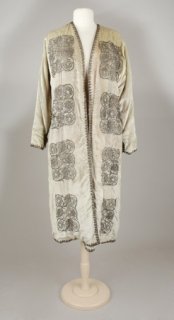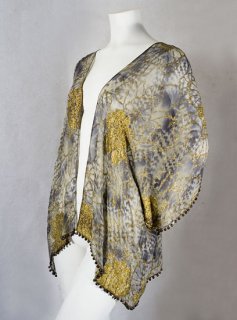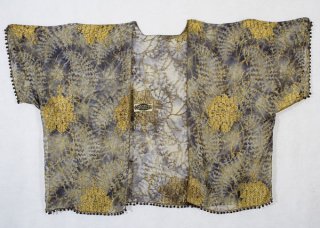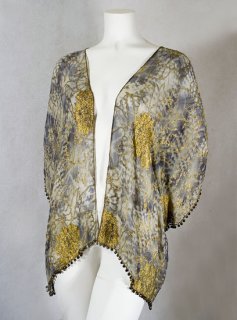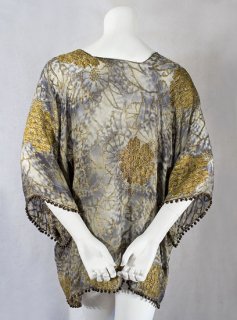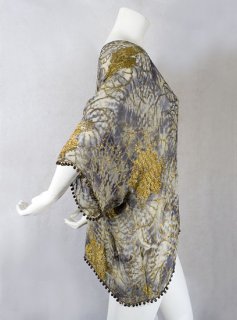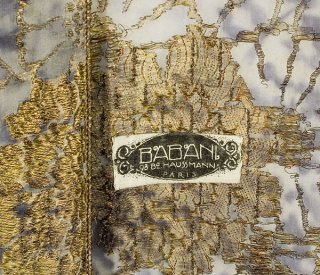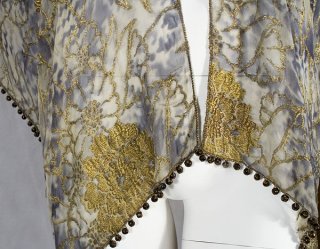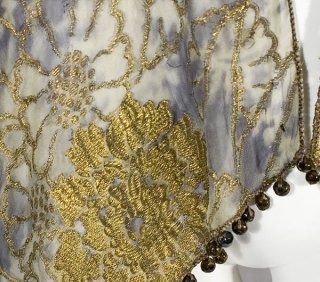Babani lamé flapper dress, c.1925
Madame Babani opened her Paris shop in 1919. She carried decorative items and imported textiles from the Orient as well as designs from Liberty of London and Mariano Fortuny. The influence of Fortuny can be seen in many of her creations.
Babani's work often exhibits that mix of invention and historical borrowing that constitutes the life of any art form. Her palette was brighter than that of Fortuny. She used strong colors, like gold, that jumped out from the background.
In her color palette, she was more au courant with the new Art Deco style than was Fortuny. Even though the color in this dress has darkened and softened with age, it is still an exemplar of the exotic hues with strong contrast favored by Babani.
The simple shift dress features front and back panels of purple satin brocaded with a flame pattern of metallic gold. The side panels and hem border are gold lamé. The panels are joined together with decorative, hand-embroidered, blue blanket stitching.
The label reads "Babani/98 be Haussmann/Paris"


